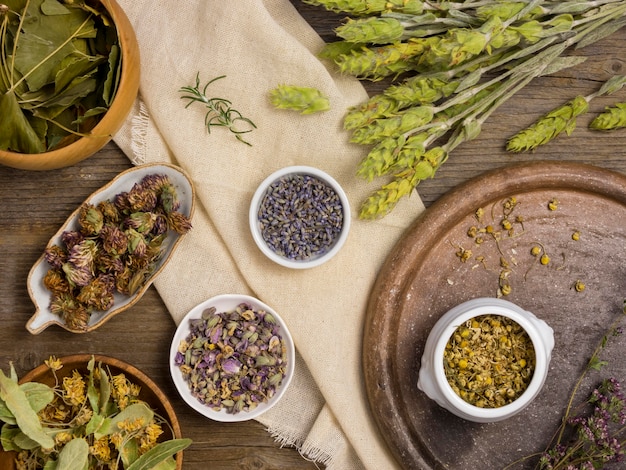Ask Ayurvedic doctor a question and get a consultation online on the problem of your concern in a free or paid mode. More than 2,000 experienced doctors work and wait for your questions on our site and help users to solve their health problems every day.
Shop Now in Our Store
Amlapitta Samprapti – Understanding the Pathogenesis of Acid Reflux in Ayurveda

Introduction to Amlapitta Samprapti
Amlapitta, often referred to as hyperacidity or acid reflux in modern terms, is a common digestive disorder in Ayurveda. The condition arises when there is an imbalance in the digestive fire, or Agni, leading to the production of excessive stomach acid. This imbalance primarily affects Pitta dosha, which governs digestion and metabolism, and manifests in symptoms like acid reflux, heartburn, indigestion, and sour taste in the mouth. Amlapitta Samprapti refers to the pathogenesis or the development of this condition, describing how it progresses in the body according to Ayurvedic principles.
In Ayurveda, the root cause of Amlapitta is often traced back to lifestyle factors, improper diet, and emotional stress that disturb the balance of the doshas, particularly Pitta dosha. This article delves into the pathogenesis of Amlapitta, its causes, symptoms, and natural Ayurvedic approaches to treatment.
Historical Roots & Ayurvedic Significance
The concept of Amlapitta has been described in ancient Ayurvedic texts such as the Charaka Samhita and Sushruta Samhita. These texts emphasize the role of Agni (digestive fire) in maintaining health and preventing disease. When Agni becomes impaired due to an imbalance in Pitta dosha, it leads to the accumulation of excess acid in the stomach, causing symptoms like acidity and heartburn. Ayurveda treats Amlapitta not just as a physical condition but also as a result of emotional and mental disturbances that contribute to digestive imbalances.
Pathogenesis of Amlapitta Samprapti
Amlapitta Samprapti outlines the sequence of events that lead to the development of acid reflux and hyperacidity:
1. Aggravation of Pitta Dosha
The first step in the pathogenesis of Amlapitta is the aggravation of Pitta dosha, which is associated with the qualities of heat, sharpness, and acidity. Factors like a poor diet (spicy, oily, or fried foods), irregular eating habits, overconsumption of alcohol or caffeine, and emotional stress can disturb Pitta, leading to an imbalance in the digestive system.
2. Impairment of Digestive Fire (Agni)
When Pitta becomes aggravated, it leads to an impairment in the body's Agni, or digestive fire. Agni is responsible for breaking down food and absorbing nutrients. When the digestive fire becomes weak or deranged, food is not properly digested, leading to the production of undigested food particles (referred to as Ama in Ayurveda). This undigested food contributes to the formation of excess acid in the stomach.
3. Accumulation of Ama and Excessive Acid Formation
As the digestive fire weakens, the undigested food, or Ama, mixes with the aggravated Pitta and causes an increase in stomach acid production. This excess acid irritates the stomach lining, causing inflammation, burning sensations, and indigestion. The acidity may travel upward into the esophagus, leading to acid reflux, heartburn, and sour taste in the mouth.
4. Manifestation of Symptoms
The symptoms of Amlapitta manifest when the stomach acid rises into the esophagus, leading to irritation and discomfort. Common symptoms include:
- Heartburn
- Sour or bitter taste in the mouth
- Indigestion
- Nausea
- Bloating
- Gas
- Acid regurgitation
5. Chronicity and Complications
If the imbalance in Pitta and Agni persists over time, it can lead to chronic conditions like ulcers, gastritis, and other digestive disorders. Untreated Amlapitta may also result in a weakened immune system, leading to further complications.
Factors Contributing to Amlapitta
Several factors can contribute to the development of Amlapitta by aggravating Pitta dosha or impairing Agni:
- Dietary Factors: Excessive consumption of spicy, sour, salty, fried, and processed foods can aggravate Pitta and weaken Agni. Overeating or irregular eating habits also contribute to digestive imbalances.
- Stress and Mental Health: Emotional stress, anxiety, and anger are common triggers for Pitta imbalances. When the mind is disturbed, it directly affects the digestive process, leading to poor digestion and the formation of excess acid.
- Environmental Factors: Hot weather, excessive exposure to the sun, and living in a high-stress environment can also increase Pitta in the body, leading to digestive disturbances.
- Lifestyle Factors: Poor sleep patterns, lack of exercise, and sedentary lifestyle contribute to the aggravation of Pitta and digestive issues.
Ayurvedic Treatment for Amlapitta
Ayurveda offers a holistic approach to managing Amlapitta through natural remedies, dietary adjustments, and lifestyle modifications aimed at balancing Pitta dosha and improving Agni.
1. Herbal Remedies
Several Ayurvedic herbs are recommended for managing Amlapitta. These herbs work to balance Pitta, soothe inflammation, and strengthen digestion:
- Amalaki (Emblica officinalis): A potent antioxidant and cooling herb that helps reduce acidity, heal the stomach lining, and support digestion.
- Shatavari (Asparagus racemosus): Known for its ability to balance Pitta and promote digestive health. It has soothing properties that help reduce heartburn and acidity.
- Licorice (Glycyrrhiza glabra): A calming herb that helps protect the mucous membrane of the stomach and reduces inflammation caused by excessive acid production.
- Guduchi (Tinospora cordifolia): Known for its detoxifying and immunomodulatory effects, Guduchi helps balance Pitta and restore digestive function.
- Ginger (Zingiber officinale): A digestive stimulant that helps improve Agni and reduce nausea and bloating associated with acid reflux.
2. Dietary Adjustments
Diet plays a crucial role in managing Amlapitta. Ayurvedic dietary guidelines for Amlapitta focus on cooling, soothing, and easily digestible foods. Recommendations include:
- Eat Cooling Foods: Include foods like cucumbers, coconut, and dairy products (such as yogurt and milk) to pacify Pitta.
- Avoid Spicy and Oily Foods: Limit the intake of spicy, fried, and sour foods that aggravate Pitta and increase acidity.
- Include Whole Grains: Opt for grains like rice, oats, and barley, which are gentle on the digestive system.
- Eat Regular Meals: Follow a regular eating schedule and avoid overeating to prevent further stress on the digestive fire.
3. Lifestyle Modifications
- Stress Management: Practices like meditation, yoga, and deep breathing exercises can help manage stress, which is a significant contributor to Pitta imbalances.
- Proper Sleep: Ensure you get enough sleep (7-8 hours) each night to support the digestive system and overall health.
- Hydration: Drink plenty of water throughout the day to help flush out toxins and maintain digestion.
4. Panchakarma Therapy
Panchakarma, the Ayurvedic detoxification process, can help eliminate toxins from the body and restore balance to the doshas. Specific therapies like Virechana (purgation) and Nasya (nasal therapy) can be used to clear excess Pitta and improve digestion.
How to Manage Amlapitta Naturally
The key to managing Amlapitta naturally is to restore balance to Pitta and Agni through proper diet, herbs, and lifestyle practices. By addressing the root cause of the condition, Ayurveda promotes long-term relief and overall wellness.
Recommended Dosage & How to Use Ayurvedic Remedies for Amlapitta
- Herbal Remedies: The dosage of herbs like Amalaki, Licorice, and Shatavari should be followed as per the practitioner's advice, generally in the range of 500 mg to 1 gram per day, depending on the individual’s condition.
- Dietary Adjustments: Focus on a Pitta-pacifying diet, including cooling foods and avoiding spicy or acidic foods.
- Lifestyle Changes: Incorporate stress-reducing practices like meditation, yoga, and regular sleep.
Potential Side Effects & Precautions
While Ayurvedic treatments for Amlapitta are generally safe, there are a few precautions to consider:
- Consult an Ayurvedic Practitioner: Always seek professional advice to ensure the remedies are appropriate for your specific health condition.
- Dosage: Follow the recommended dosage for herbs to avoid digestive upset or other side effects.
- Pregnancy & Nursing: Pregnant or nursing women should consult an Ayurvedic practitioner before using any herbal remedies.
Frequently Asked Questions for Amlapitta Samprapti
What causes Amlapitta in Ayurveda?
Amlapitta is caused by an imbalance in Pitta dosha, which leads to the aggravation of digestive fire and the formation of excess stomach acid. Factors like poor diet, stress, and lifestyle choices contribute to this imbalance.
What are the symptoms of Amlapitta?
Symptoms include heartburn, indigestion, sour taste in the mouth, nausea, bloating, and acid reflux.
How can Ayurveda treat Amlapitta?
Ayurvedic treatment focuses on balancing Pitta dosha, improving digestion (Agni), and reducing acidity using herbs like Amalaki, Licorice, and Shatavari, along with dietary changes and lifestyle modifications.
Is stress a major factor in Amlapitta?
Yes, stress and emotional disturbances can significantly contribute to the aggravation of Pitta dosha and the development of Amlapitta.
Can Panchakarma help in treating Amlapitta?
Yes, Panchakarma therapies like Virechana and Nasya can help detoxify the body, eliminate excess Pitta, and restore balance to the digestive system.
How long does it take to treat Amlapitta with Ayurveda?
With proper diet, herbs, and lifestyle changes, most individuals experience relief from Amlapitta symptoms within a few weeks to months.
Are there any side effects of Ayurvedic remedies for Amlapitta?
Ayurvedic remedies for Amlapitta are generally safe, but it's important to follow the correct dosage and consult an Ayurvedic practitioner for personalized guidance.
Conclusion & Expert Insights
Amlapitta Samprapti offers a comprehensive understanding of the pathogenesis of acid reflux in Ayurveda. By addressing the root cause of the condition—an imbalance in Pitta dosha and digestive fire—Ayurvedic treatments offer natural and holistic relief from the discomfort and long-term complications of Amlapitta. With the right combination of herbs, dietary adjustments, and lifestyle modifications, individuals can restore balance and achieve lasting health.
References & Further Reading
- Sharma, P.V. (1995). Charaka Samhita.
- Lad, V. (2002). Ayurveda: The Science of Self-Healing.
- National Institute of Ayurveda:
- Journal of Ayurveda and Integrative Medicine for research on digestive health and acid reflux.
This article is checked by the current qualified Dr Sujal Patil and can be considered a reliable source of information for users of the site.



